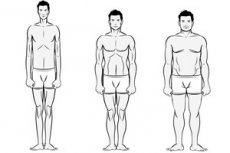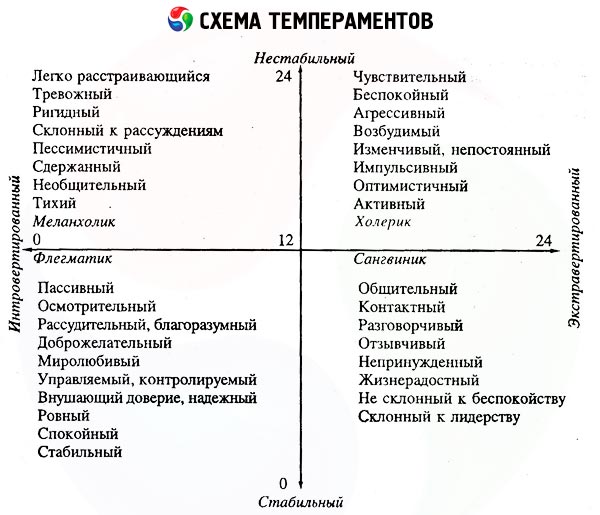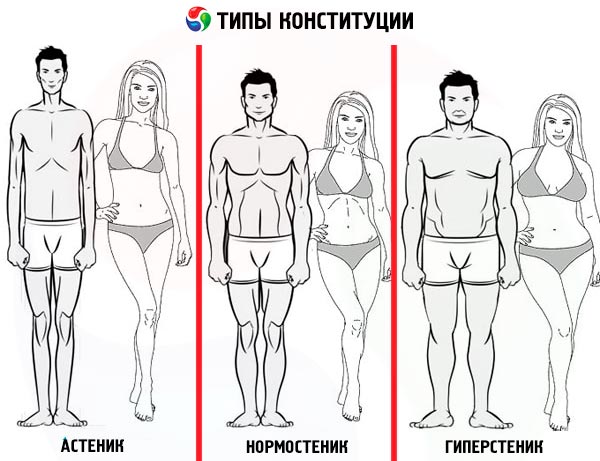Medical expert of the article
New publications
Physique
Last reviewed: 04.07.2025

All iLive content is medically reviewed or fact checked to ensure as much factual accuracy as possible.
We have strict sourcing guidelines and only link to reputable media sites, academic research institutions and, whenever possible, medically peer reviewed studies. Note that the numbers in parentheses ([1], [2], etc.) are clickable links to these studies.
If you feel that any of our content is inaccurate, out-of-date, or otherwise questionable, please select it and press Ctrl + Enter.

Body type (constitution) is understood as a set of properties of the organism, determined mainly by heredity, but also formed under the influence of lifestyle, environment, including social factors. The formation of morphological and functional properties of various organs and systems occurs under the influence of the regulatory role of the nervous and endocrine systems.
A general examination allows us to determine whether the patient's appearance corresponds to his age. This assessment is quite subjective. However, a patient who looks older than his age has more grounds to suspect a disease that occurs in later life.
In this regard, the classification of human temperament and character, known since ancient times, has some significance:
- choleric;
- phlegmatic person;
- sanguine;
- melancholic.

Characterizing the strength and ratio of the excitatory and inhibitory processes in the central nervous system, I. P. Pavlov characterized these temperaments accordingly as follows:
- strong, unrestrained;
- strong balanced - slow;
- strong balanced - fast;
- weak.
The development of man in a social environment, i.e. human society, has led to the formation of mental characteristics, inclinations and abilities of man, which are in development and sometimes have a pronounced influence on his way of life. At the same time, individual achievements are possible, which are regarded as manifestations of great talent.
This applies to such types as artistic - artistic; mental - scientific and technical; social and the so-called "golden hands" (the latter refers to a person who has the ability to do handicrafts and performs large physical loads in the form of fairly stereotypical movements, while sometimes signs of damage to the locomotor system can be detected).
Upon external examination, three constitutional types can be distinguished: asthenic, normosthenic and hypersthenic.

Asthenics are characterized by the predominance of longitudinal dimensions over transverse, their limbs are elongated and thin; asthenics are often thin, their muscles are relatively poorly developed. Asthenics are characterized by a tendency to lower blood pressure, metabolism is accelerated, absorption in the intestine is less intense. Asthenics are more prone to tuberculosis, gastric ulcer.
The hypersthenic type is characterized by the predominance of transverse dimensions over longitudinal ones. The head is round, the face is wide, the features are soft, the neck is short and thick, the chest is wide and short, the ribs are located almost horizontally. This type has a tendency to high blood pressure and obesity. Hypersthenics often suffer from metabolic disorders with the appearance of stones in the kidneys and gall bladder, atherosclerosis.
In general, clearly expressed constitutional types are not so common, the influence of the external constitution on the development of specific pathological processes is not so often traced and does not have much diagnostic value. The psychological type is important from the point of view of assessing the social and physical activity and lifestyle of the patient.

